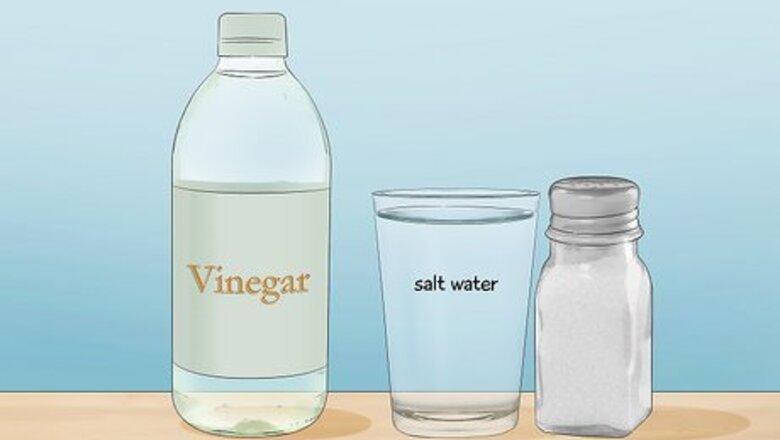
views
- Soak the item in salt and vinegar while scrubbing it with a brush for a custom patina.
- Purchase a commercial brass ager and apply it to your brass for a more uniform and color-specific look.
- Expose your brass to ammonia fumes to give it a more textured, natural vibe.
Antiquing Brass with Salt Water and/or Vinegar
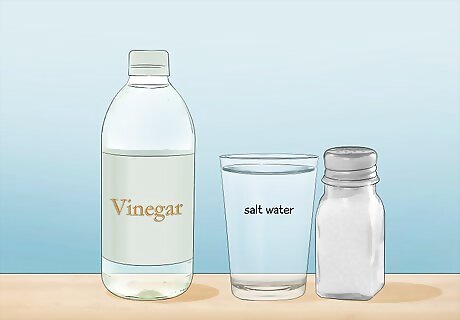
Use vinegar or salt water to antique your brass safely and easily. Any type of household vinegar, table salt, or a combination of the two will antique and age brass. This can take longer to work than other methods, but it gives you complete control over just how dark the patina is. Plus, you don’t have to handle any dangerous chemicals and probably already have the necessary ingredients in your kitchen. Wear rubber gloves to protect your skin while you work. Most brass is protected by a lacquer. Luckily, corrosion from the vinegar and salt should remove any lacquer layer just fine. If this doesn’t work though, use acetone to scrub the lacquer away.
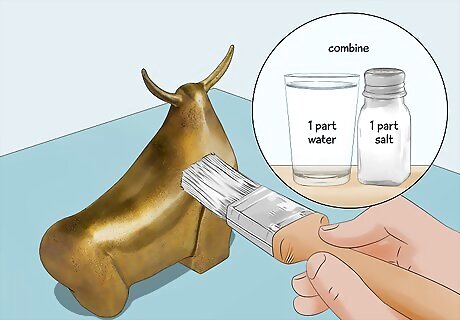
Apply salt water to make brass slightly darker. Mix equal parts table salt and water in a small container. Apply it with a small paintbrush over the entire surface and reapply it daily until you've achieved the appearance you enjoy. Let the salt water air dry in between coats to monitor the oxidization.
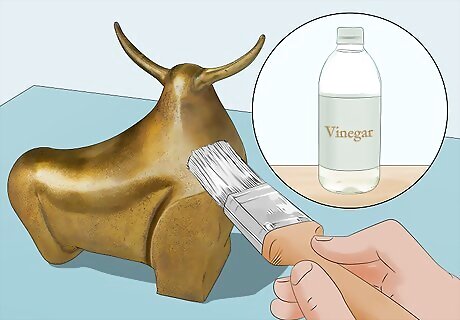
Coat the brass with white vinegar for a more pronounced aging. Apply the vinegar with a brush or simply dip the piece in any type of vinegar. Allow the item to air dry, then apply an additional coat if you'd like to make it even darker. Mix a spoonful of table salt into the vinegar for a greener patina. Heating the brass with a hair dryer or oven to around 450 °F (232 °C) will produce more noticeable results, but you'll need oven mitts or thick gardener gloves to handle it at this temperature.
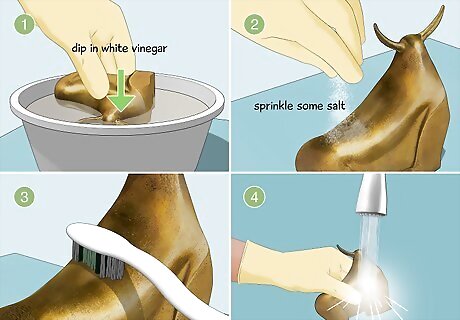
Combine vinegar and salt to age the brass quickly. If you’re just interested in doing this quickly and you aren’t concerned with monitoring the color as you work, this is the best option. Dip the item in the vinegar and sprinkle some salt on the item. Then, scrub the item with an old toothbrush or steel wool. Continue working until you have a color and texture you like. When you’re done, rinse the brass off under water and let it air dry.
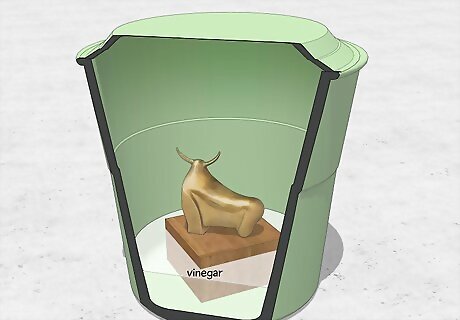
Use vinegar vapors for a softer, warmer brown appearance. This may not achieve the authentic appearance that ammonia or aging/antiquing solution will, but some people prefer the "gingerbread" appearance that results. In any case, it is certainly safer and less expensive than those methods. Here’s how it works: Pour some vinegar into a plastic bucket with an airtight lid. Place wooden blocks or other objects into the bucket so a stable, flat surface is dry above the level of the vinegar. Place the brass on top of the objects. Seal the lid to trap the vinegar fumes and let them alter the brass for several hours or overnight.
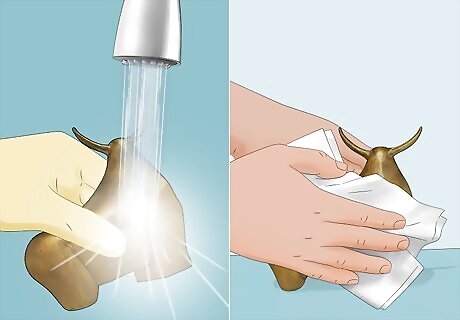
Wash the brass and dry it to clean off any solvents or materials. Do not use any mechanical or chemical cleaners. Once the result you want is achieved, which may take several applications, wash the brass in warm water. Dry it gently with a towel or by applying heat. Once it is dry, you have the option to preserve its color by coating it with a brass lacquer or wax.
Antiquing with a Commercial Brass Ager
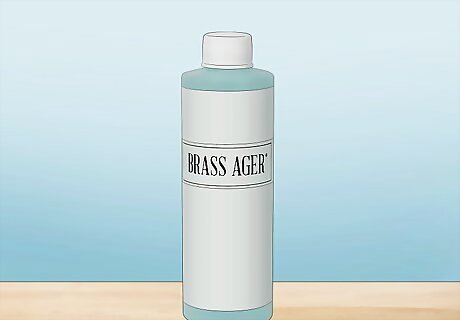
To age brass rapidly and evenly, use brass ager antiquing solution. This is the quickest of all methods and it will result in even and uniform coloration. Purchase any antiquing solution or brass ager that explicitly mentions brass on the label. The specific brand will determine the appearance of the antiqued piece, but the process should be similar regardless. Different aging solutions result in different shades. There are green patina solutions, black aging solutions, etc. Make sure you pick a product that will create the shade you want!
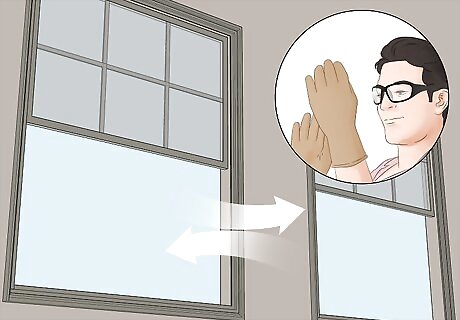
Use rubber gloves, safety goggles, and good ventilation. Antiquing solutions can be made with a variety of chemicals, most of which can damage skin and eyes or release toxic fumes. Protect yourself with basic safety equipment and open the windows before you begin. Be especially careful if your product contains any of these hazardous chemicals: ammonium hydroxide, glacial acetic acid, nitric acid, or sulfuric acid.
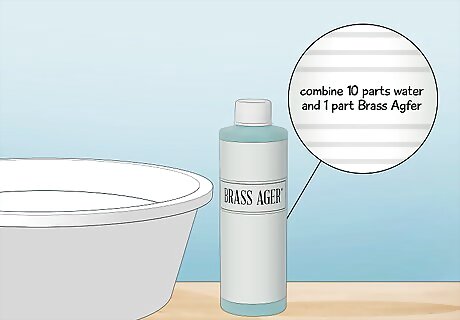
Dilute the antiquing solution per the manufacturer's instructions. Read the label carefully. Some solutions may not require diluting, whereas others require as much as 10 parts water to 1 part antiquing solution. Use room temperature water and mix everything in a ceramic or plastic container large enough to submerge the entire brass object. Do not use containers made from other materials, as the acids in the solution could corrode them. Do not fill the container too full. Leave room to fit the brass object without the container overflowing.
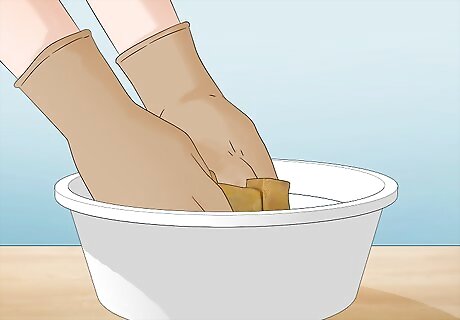
Soak the item in the solution and rub it thoroughly. While wearing rubber gloves, hold the brass in the solution and move back and forth to dislodge air bubbles. Make sure the solution covers the entire object, but doesn't reach near the top of your gloves. Scrub it with a cloth, by hand, or with a sponge to force the solution into the material. Air bubbles that remain on the brass will cause bright spots where the brass has not aged. Turn the brass object in your gloves so you get even exposure to the solution.
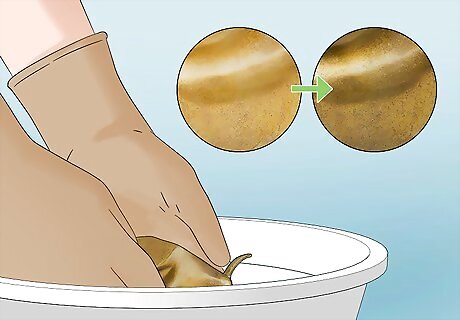
Watch the color change and stop once you’re happy. Check the color after a few seconds and monitor it as it begins changing colors. Pull it out when you see the color you're aiming for. If you plan to brighten your object with highlighting (see below), let it get slightly darker than the color you want. Don't worry that you'll ruin your brass. If you pull it out too early, simply put it back in and keep coating the item. If you pulled it out too late, scrub with a dish pad or lightly with steel wool to remove the color so you can try again.
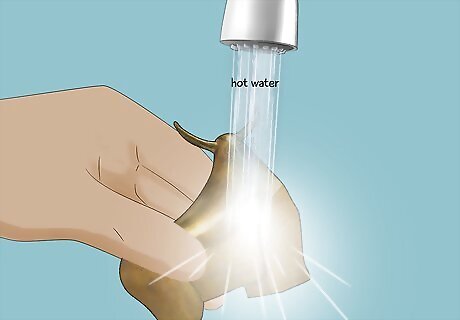
Rinse the object to highlight it (optional). Rinse the brass with hot water and clean off the resulting white powder using a sponge or dish pad. This creates bright accents that will make the patina on your object appear more natural and dynamic. If you are trying to create a black or almost black patina, you'll have better results getting the patina to stay if you dip it in two or three stages, rinsing between each one.
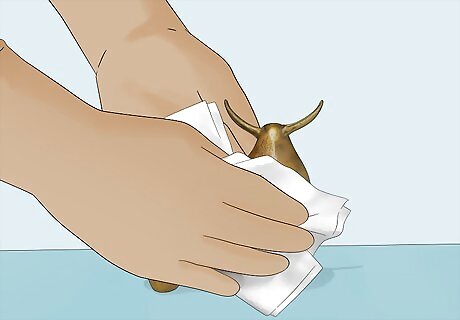
Dry the item evenly with a clean cloth or rag. Once you are satisfied with the color, immediately dry the whole object. Wet patches will dry darker than the rest of the surface. You may want to use a paper towel or rag, since some color could rub off onto it.
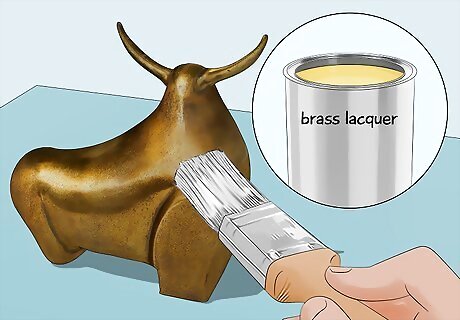
Treat with lacquer or wax to preserve the current color (optional). Applying a brass lacquer or other brass finishing treatment will prevent the brass from aging further. This is recommended if the brass is handled frequently or if you want to preserve the current color.
Aging Brass with Ammonia Fumes
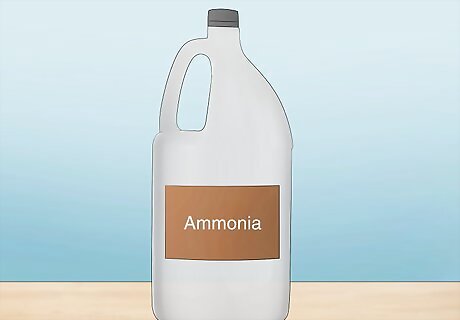
Apply ammonia periodically to produce the most natural patina. Ammonia is a caustic substance that should be treated with caution, but it does come closer than any other method to creating the green-brown appearance of naturally aged brass. A lot of folks in the clock repair and rifle restoration community have found that overdoing it with ammonia can cause items to crack. Do this at your own risk and don’t apply ammonia to any brass items that will hold weight or provide structural support to something. Ammonia will eventually evaporate off the brass, so you'll need to commit to repeating this process every time your brass returns to its old appearance. How long this takes depends on the exact qualities of your object.
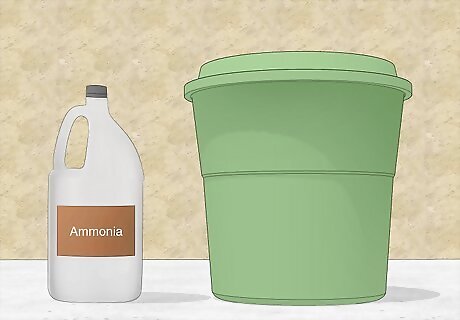
Buy ammonia and a sealable bucket. Use full-strength ammonia (usually called “pure” or “clear” ammonia), not the diluted household ammonia commonly sold at supermarkets. If you don’t have one, buy a plastic bucket with an airtight sealable lid. For tiny pieces of brass, you can use a glass bottle with an airtight cap instead of a bucket. Tie the item with a cord and suspend it over a small amount of ammonia, screwing the cap firmly to hold the cord in place and trap the ammonia fumes.
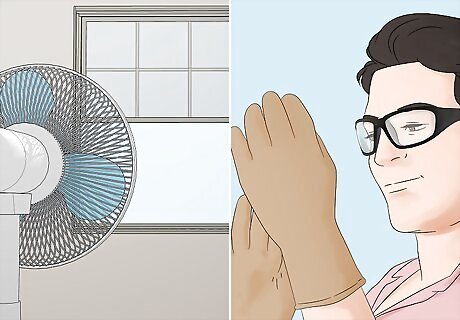
Wear rubber gloves, safety goggles, and turn a fan on. Do this outdoors if you can. If you can’t, at least open the windows and turn a fan on. Ammonia fumes are toxic if you’re exposed to them for a long time, so avoid as much of the aroma as you can.
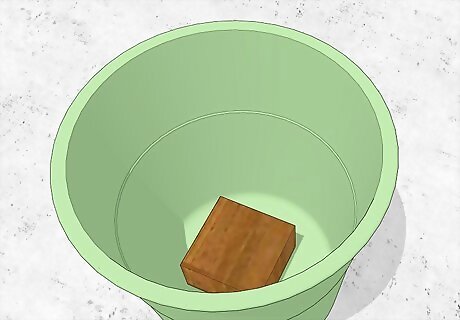
Place a wooden block in the bottom of the bucket. Create a stable, flat “shelf” large enough for the brass object to sit on with the block. For large objects, you can use a sheet of plywood or create a frame for the item using multiple wood blocks.
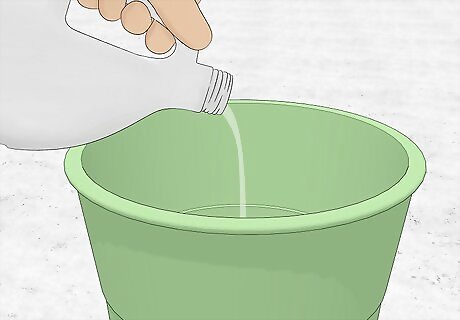
Pour ammonia into the bucket. Keep the ammonia level below the upper surface of the wood. You don't need to fill the bucket, although more ammonia may hasten the process.
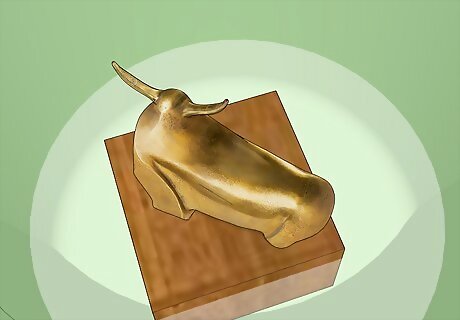
Place the brass objects on the dry wood. Make sure the brass is stable and in no danger of falling directly into the ammonia. If the brass does get wet with ammonia, remove the item with gloved hands and wash it in warm water. Dry the item before returning it to the wooden bucket.
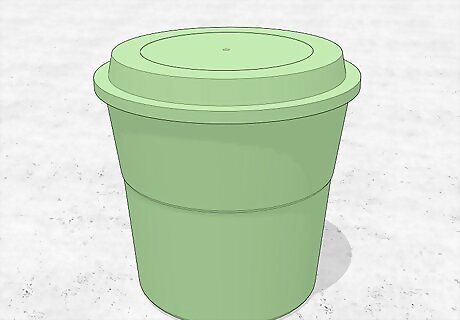
Seal the lid and check back periodically on your item. Depending on the temperature and humidity, the freshness of the ammonia, and the exact characteristics of your brass, the antiquing could take hours or days to take effect. Check back every hour or so to see how it's progressing. Open the lid slightly for a quick glance, then close it tightly to keep most of the ammonia fumes in.
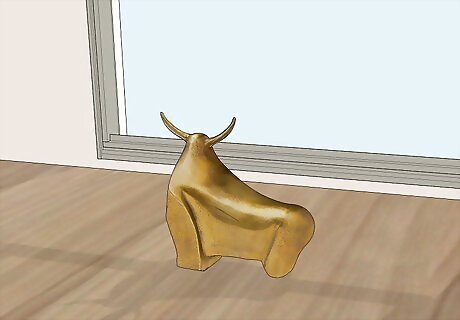
Let the brass air dry in a well-ventilated area. Once the desired color is reached, remove the item with a gloved hand and set it somewhere with a lot of flowing air. Let it dry then wax or lacquer the item if you want a more polished effect.
Brass Prep & Identification
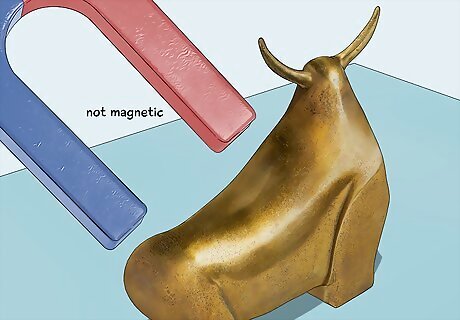
Make sure the object is actually brass with a magnet. Brass isn’t magnetic. If a small magnet sticks firmly to the surface, you probably have an object made from a different metal that’s brass-plated. Do not use agers or other corrosive agents to age brass-plated items. Take your object to an antique shop or some other expert if you want to be 100% positive it’s pure brass. Clean brass has a bright, golden-brown appearance. The most similar metals in appearance are copper, which is brown or pink-brown, and bronze, which is a much darker brown.
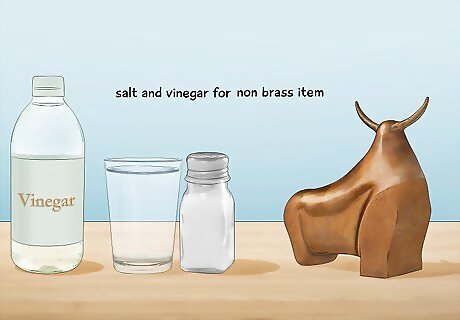
Use vinegar and salt only if the item isn’t brass. If your object is only brass-plated, try using a gentle treatment such as vinegar or salt water, as harsher materials may corrode through the thin brass layer. Aging copper requires a different process and a mixture of vinegar, ammonia, and salt. To antique bronze, purchase a bronze ager and follow the instructions on the label.
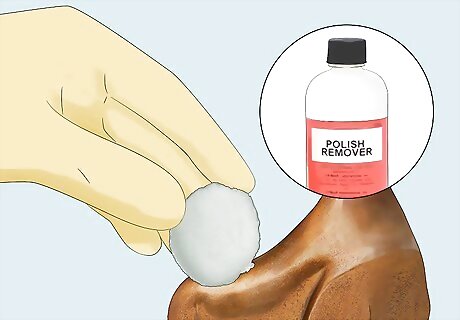
If the brass is lacquered, remove it with nail polish remover. Lacquer is a clear, hard, protective finish that prevents the brass from oxidizing, which is the aging process you're trying to encourage or imitate. Apply the nail polish remover, also known as acetone, to the object to strip off the lacquer. Wear rubber gloves and work in a ventilated area to avoid inhaling fumes. Let small objects soak in the acetone. Use a paintbrush to brush the chemical onto large objects. Be sure to coat every corner of the object. Methyl alcohol, paint remover, or lacquer thinner will also do the job.
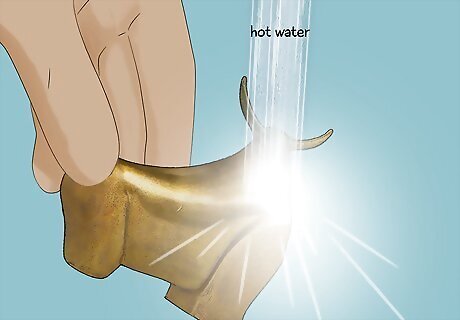
Pour hot water over the object after treating it with nail polish remover. Wait a few minutes or until the lacquer is peeling off or dissolving into goo. Wash the object in hot water to remove the lacquer. Check to make sure there is no remaining lacquer. Modern brass objects are often protected with tough lacquer that can take several attempts to remove entirely.
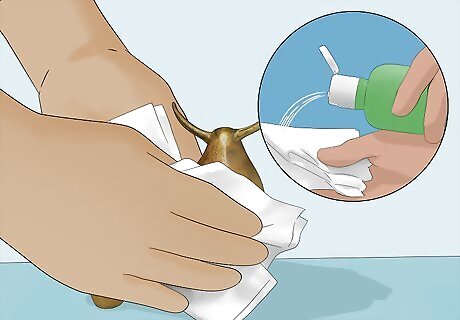
If there is a thin protective film or no finish at all, wash with gentler materials. If the object feels greasy or has a thin layer of polish on it, you can probably clean it with a cloth soaked in rubbing alcohol or a 50/50 mix of vinegar and water. For completely untreated brass, a thorough wash with soap and water should be enough to prepare it for antiquing. Wear gloves even when using these skin-safe cleaning products, since oils from your hand can get on the brass and prevent the antiquing effect from taking place evenly.
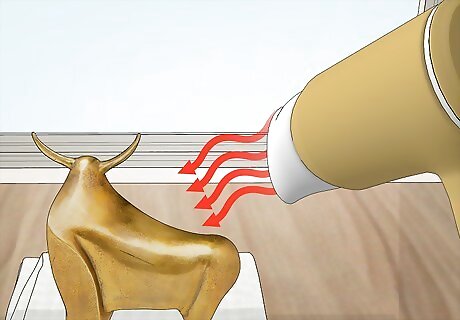
Dry completely before continuing. Do not begin the antiquing process until the brass is completely dry. A hair dryer, propane torch, or oven can speed up this process. Be cautious when applying heat to a brass object that recently had its lacquer removed. If you missed a piece of lacquer, it could catch on fire or release fumes. Dry the brass in a well-ventilated area with no flammable objects nearby. You can now use any of the methods described below. If you're unsure which to use, read the first step of each one to learn the benefits of each option.

















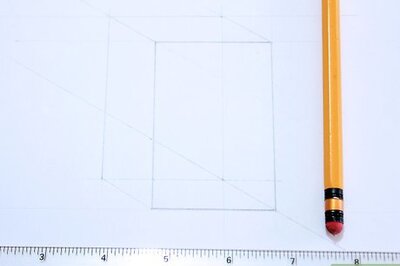
Comments
0 comment